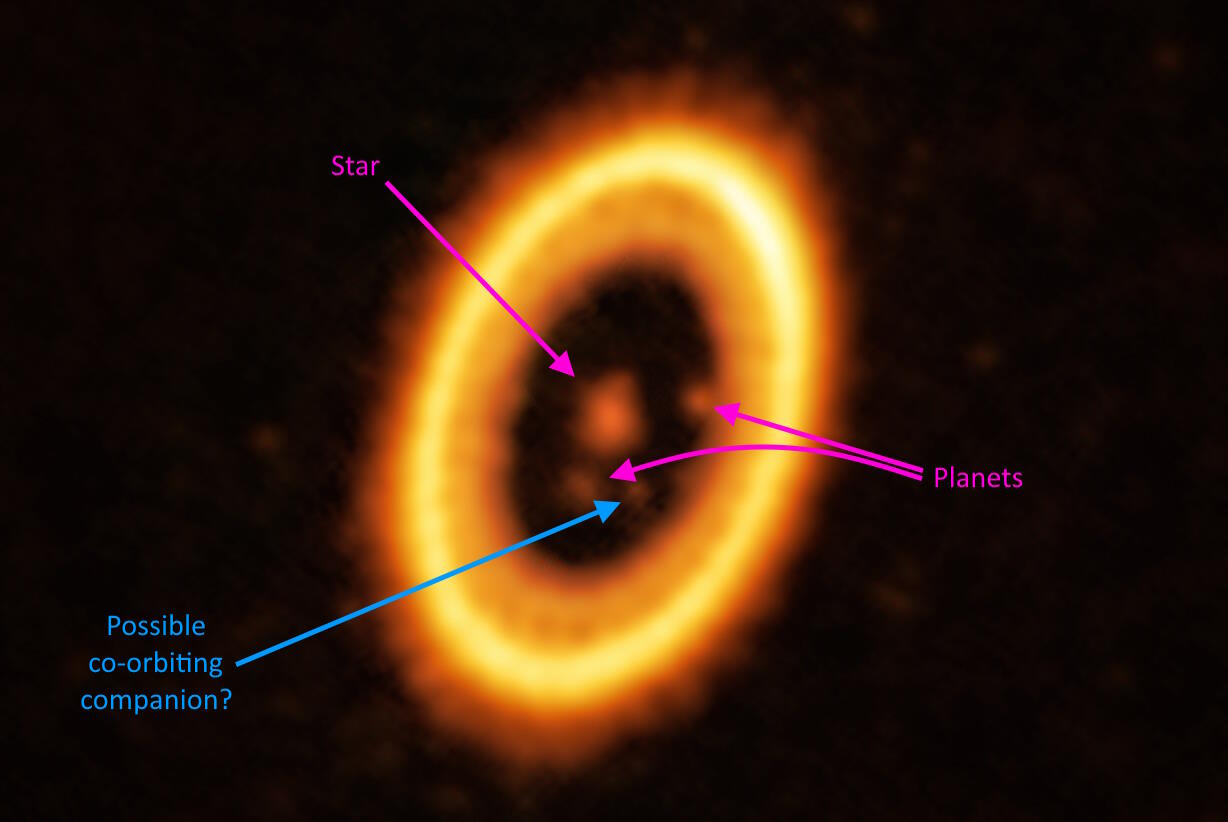It took a very small person to ask a big question, one that planetary scientists pondered for a long time. There are four gas giants in our solar system – Jupiter, Saturn, Uranus and Neptune – but why are their moons not made of gas? They’re solid, unlike the planets they orbit.
As always, Bill Nye is on standby to explain the workings of the world and universe around us. The widely accepted theory on how Earth’s moon was created is known as the Giant Impact Hypothesisis. It states that a very young proto-Earth was struck by an asteroid, and in that collision both Earth and the debris that chipped off it became molten. They both cooled off, and now we have a moon; nicely spherical (although not perfectly) and solid, in orbit around us.
So why don’t gas giants have gas moons? The simple answer: gravity. When Jupiter or Saturn have undergone similar collisions or events that resulted in a fragment being spun off into their orbits, those new moons were too small to sustain themselves in a gaseous state. Gravity pulled the gas down until it formed a solid sphere. A gas giant, on the other hand, stays gaseous because of its size; there is so much heat generated from its spin that it cannot cool down into a solid state. Jupiter, for example, has 67 known moons and even the bigger ones like Io, Callisto, Europa and Ganymede, have cooled off – they’re non-gaseous, unlike Jupiter itself.
Much can be learned after we know the state of moons; we now know that Europa has twice as much seawater as Earth, but that the water is under a crust of ice. One day, we may find life in those oceans – they’ve been around for 4.5 billion years, so it’s likely Europanians may be living there, says Nye.
Bill Nye’s most recent book is Unstoppable: Harnessing Science to Change the World.
Aria: Hi Bill Nye. My name is Aria. My question is where do all moons come from and why do gas giants not have gas moons?
Bill Nye: Wow. That is a great question Aria. Wow. First of all I was alive when people figured out or satisfied themselves as to where our moon came from. And it's generally agreed that our moon was created when the earth was hit with another pretty big thing, another asteroid. And the impact was very hard and the energy of the smashing was converted to heat and both the earth and the moon were hot and molten and they both cooled off and here we are with this other separate thing in orbit around us. Now why do gas giants not have gas moons is a great question and the answer is almost certainly because of gravity.
So when you have these little things that spun off of, let's say Jupiter or Saturn, they were too small to sustain themselves as just balls of gas. The gas shrunk down, gravity pulled it down and formed a solid thing. Whereas on Jupiter and Saturn there's so much spin, so much heat created that these are held in the gaseous state or what we call gaseous state by the energy that's coming out of them, where as the smaller ones cooled off so much that they turned solid. It is just a fantastic question, Aria. And astrophysicists or planetary scientists speculate about this all the time, but what a fantastic thing that you made this observation. The moons of Jupiter, the big ones Io, Callisto, Europa and Ganymede those big moons are cooled off. They're not gaseous like Jupiter, what they orbit. That is fantastic. Wow. And maybe more will be learned about this.
And I gotta tell you, Aria, it's very reasonable that in your lifetime we will send the right spacecraft to Europa and the moon of Saturn, Enceladus and Titan, and look for signs of life. Instead of being a gas giant, in this one example, Europa is the moon of Jupiter that has twice as much seawater as the earth and that water is under a layer of ice. And I mention it because it's evidence of how things cool off when they're in space and they're small – or relatively small. The ice forms because the heat of creation, things smash together and that heat is radiated into space so there's a crust of ice, but the water underneath is kept liquid by the gravitational exercising of its orbit around Jupiter. It's amazing. What an observation. Aria, you're making my day. I hope you will be involved in missions to Europa and you will look for signs of life below the ice. I mean who knows if you have an ocean for four and a half billion years things are going to happen. There could be living things there. There could be Europanians out there, fish people that you'll interact with. Keep us posted. Thank you.







